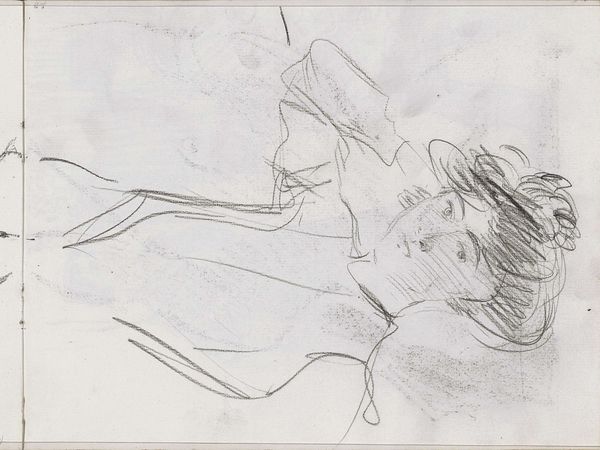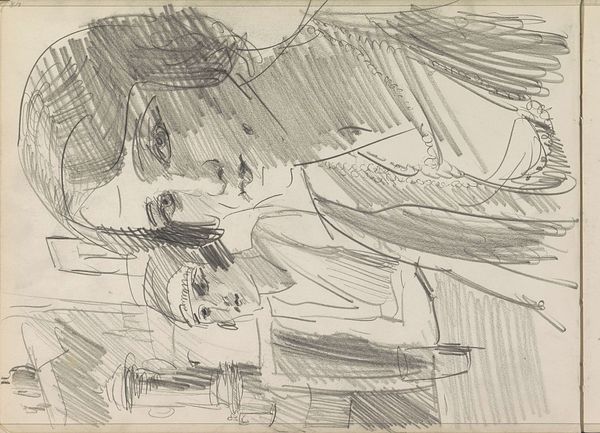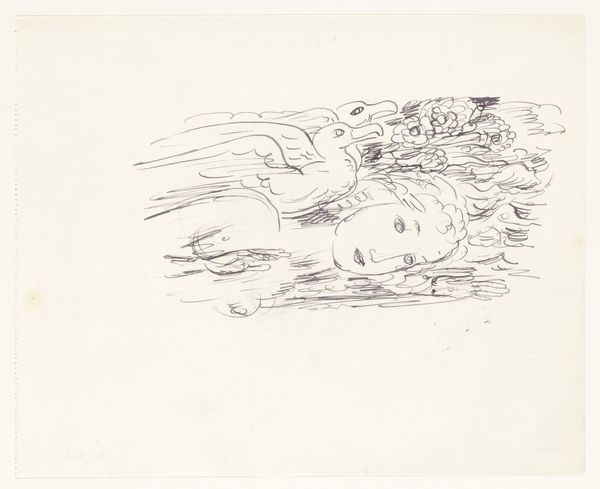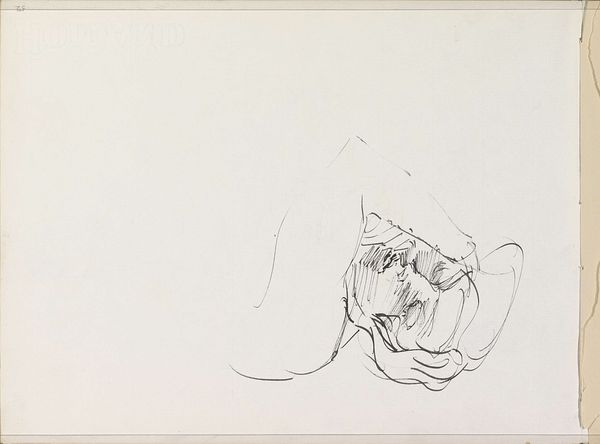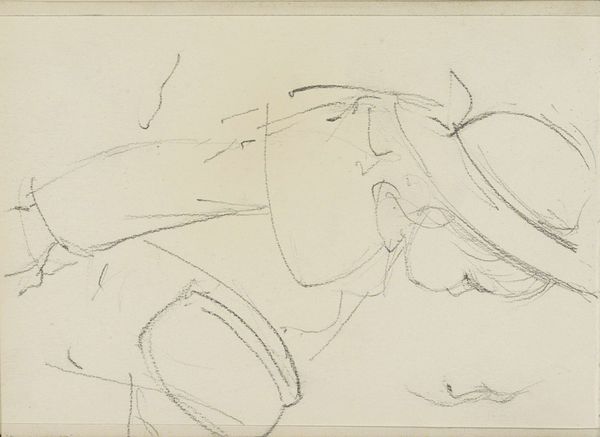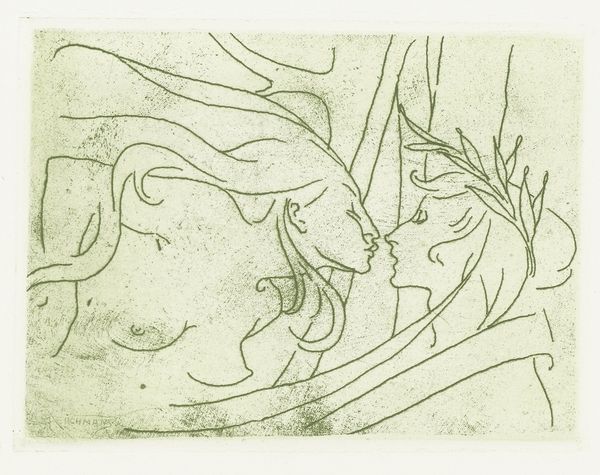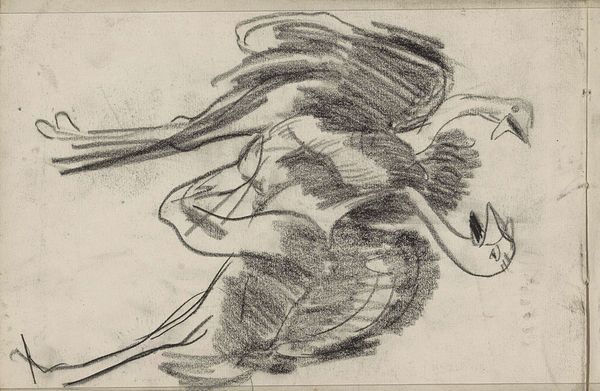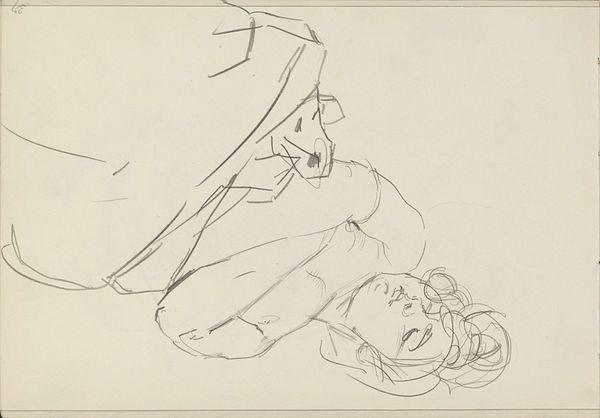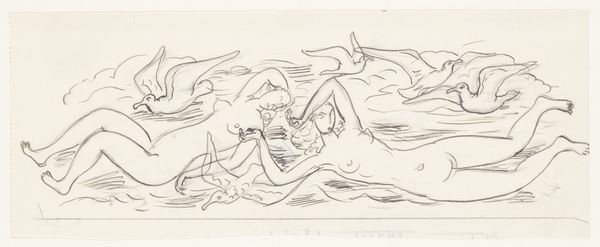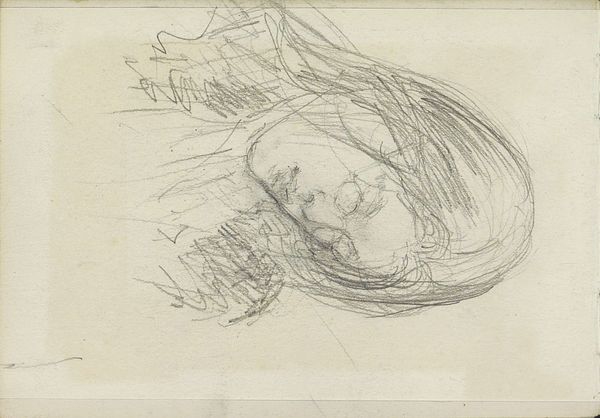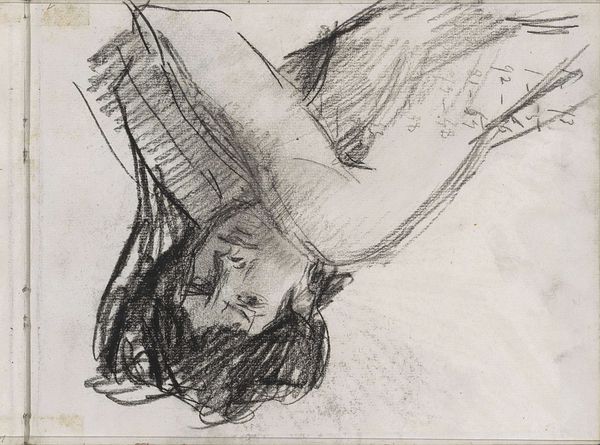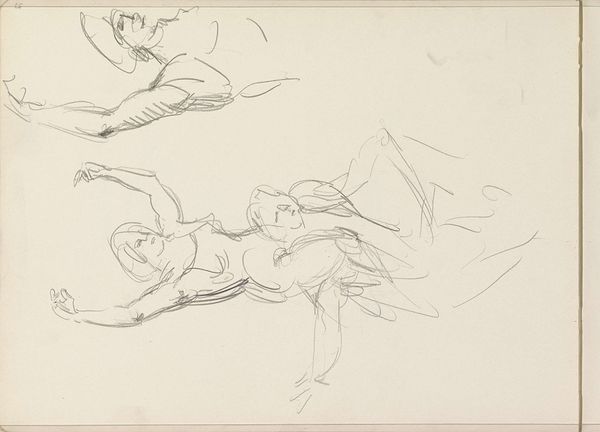
#
imaginative character sketch
#
light pencil work
#
quirky sketch
#
pencil sketch
#
personal sketchbook
#
sketchwork
#
ink drawing experimentation
#
sketchbook drawing
#
sketchbook art
#
fantasy sketch
Copyright: Rijks Museum: Open Domain
Curator: This piece, entitled "Twee vrouwenhoofden," or "Two Women's Heads," comes to us from Isaac Israels, likely created sometime between 1875 and 1934. Editor: It’s quite striking. I'm immediately drawn to the simplicity, the sketchiness. It feels so immediate, intimate almost. The overlapping lines create this almost dreamlike quality, obscuring definition, playing with perception of identity. Curator: It's fascinating to see Israels experimenting with form and composition like this. It gives us a peek into the social milieu, particularly how women were perceived and portrayed within artistic circles of that era. Editor: Exactly. There is such ambiguity—who were these women? What was their relationship to Israels, and each other? Were they subjects or active participants? We might think about Laura Mulvey's ideas of the 'male gaze' and whether it's possible to subvert such entrenched power dynamics through such a seemingly fleeting sketch. Curator: Given the timeframe, the institutional context—museums, exhibitions—undoubtedly shaped how Israels’ work was received. Did this work align with the academy’s expectations, or was Israels consciously pushing against conventions in depicting female subjects? Were there discussions on women’s rights at that time that may have influenced Israels. Editor: I agree. And what narrative emerges from the work. Is there an indication in their expressions about class, societal roles or desires. If so, the social and gender expectations are being clearly defined and explored. It suggests how fluid female identity really is in this era of evolving feminism. Curator: Seeing sketches like these allows a reconsideration of not just the final 'product', but the artistic journey itself, and the societal forces shaping visual culture. It prompts important questions about power dynamics in the art world itself. Editor: It truly captures the essence of a moment, those brief glimpses that convey so much about identity and the narratives surrounding these women in his world.
Comments
No comments
Be the first to comment and join the conversation on the ultimate creative platform.
